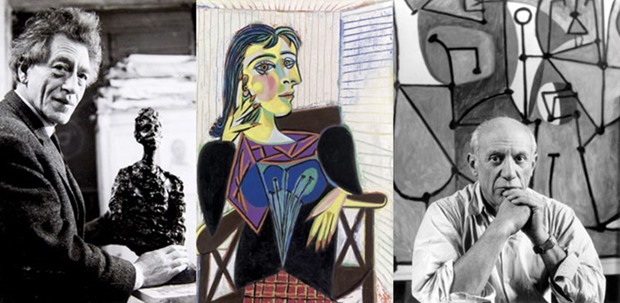To best teach the students, lessons and stories must be drawn straight from the masters. Teachers in Qatar are set to receive “an all-round introduction” to the works of two of the greatest artists of the 20th Century – Pablo Picasso and Alberto Giacometti – and the main artistic movements of their time, as part of an event accompanying an important upcoming exhibition of modern art soon to be unveiled by Qatar Museums (QM).
To accompany the opening of Picasso-Giacometti exhibition on February 21 – it will be on till May 21 – QM Education is organising a unique Teacher Training session, presented by the education specialists from Fondation Giacometti in Paris.
The programme, consisting of one three hour-long training session, will enable teachers to conduct self-guided tours of the exhibition for their students, to prepare the students for experiencing exhibition using the teaching tools they will receive, to conduct studio art workshops on premises of the Fire Station or in the classroom, and to obtain materials to be used for post-visit discussion, says QM.
Dr Jelena Trkulja, Director of Education, Department of Education, QM, told Community, “Qatar Museums is committed to providing learning opportunities in the fields of art and culture to Qatar’s society at large. As an intrinsic part of our exhibitions, we offer engaging, fun and interactive educational activities, focusing especially on school children, teachers and families. The upcoming exhibition Picasso-Giacometti is framed by numerous learning opportunities and educational resources. The teaching materials developed for this exhibition will also be useful to teachers when teaching Modern Art in general.”
The training sessions are offered from January 29 to February 2, at the Museum of Islamic Art, Education Centre Classroom on the second floor; and February 22 and 23 at the Fire Station Auditorium. Teachers can register and choose to attend a morning (9am-12pm), or an afternoon session (3pm-6pm), on any of the above dates. All sessions will be delivered in English, except the afternoon session (3pm-6pm) on Thursday, February 2, which will be offered in French.
Trkulja explained, “All schools are invited to visit the exhibition, where they will be told about the artworks by the QM Art Education Team and offered to participate in hands-on art workshop at the Fire Station Education Studio, where they will create their own art based on the artworks they will encounter in the exhibition. All tours and workshops are adjusted to the specific age level and grade and are linked to the Ministry of Education’s Art curriculum.”
The topics that will be covered during each of the three-hour sessions are staggered thus: An introduction that includes a presentation of the two institutions (history, collection, archives, collaboration), a presentation of the two speakers: who they are, what they are doing in France; a presentation of the course: what they are going to do and the objectives of the next three hours, and a presentation of the audience: some quick questions to know who they are and if they are familiar with the process.
Part One, titled ‘Cultural Mediation,’ will provide an overview of the exhibition, covering a brief overview of the similarities and differences between the two artists, the scientific researches that have been conducted by the curators, and the exhibition’s reception in Paris. Even cultural mediation will be dissected, breaking down aspects such as “How to conduct a visit?”, “How to prepare it?”, “What activities can be made during the visit, to keep the children’s attention?”, “Which tools can we use?”, “What are the other existing tools?”, “Ideas of what can be made in the classroom afterwards?”
Part Two explores the exhibition, the introduction taking the attendees through the presentation of the artists – their childhood and the relationships to the father/artist, their first works of art (images of works), their coming to Paris: the historical and artistic context of Paris before and after the war. This will be followed by delving into the exhibition trail for each room, ranging from giving the historical and art historical context to the key-notion for the children to assimilate according to their ages and levels.
Presentation of the workshops that have been suggested for the children of the ages of their classes comprises Part Three of the session. This part will address everything from the problems the teachers could encounter in the workshops and how to react to them, to encouraging other ideas for workshop.
As for Family Tours and Workshops, Trkulja said, “Alike the programme offered to schools – a combination of a guided visit and an art workshop with QM Educators – during the week, Family Program is offered on Saturdays and includes similar activities, adapted for the whole family.”

Alberto Giacometti; Picasso’s piece titled Portrait of Dora Maar, 1937 and Pablo Picasso


